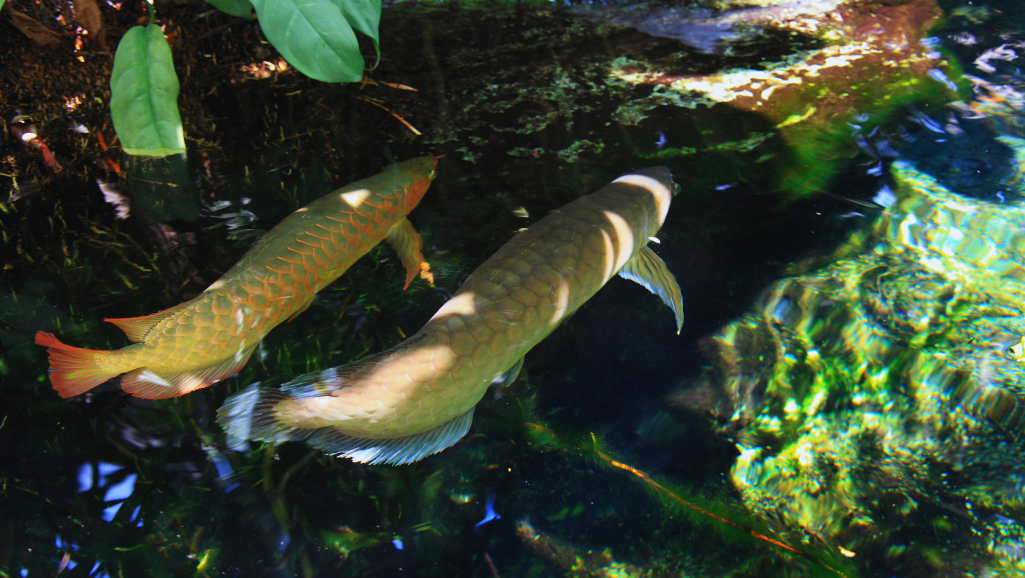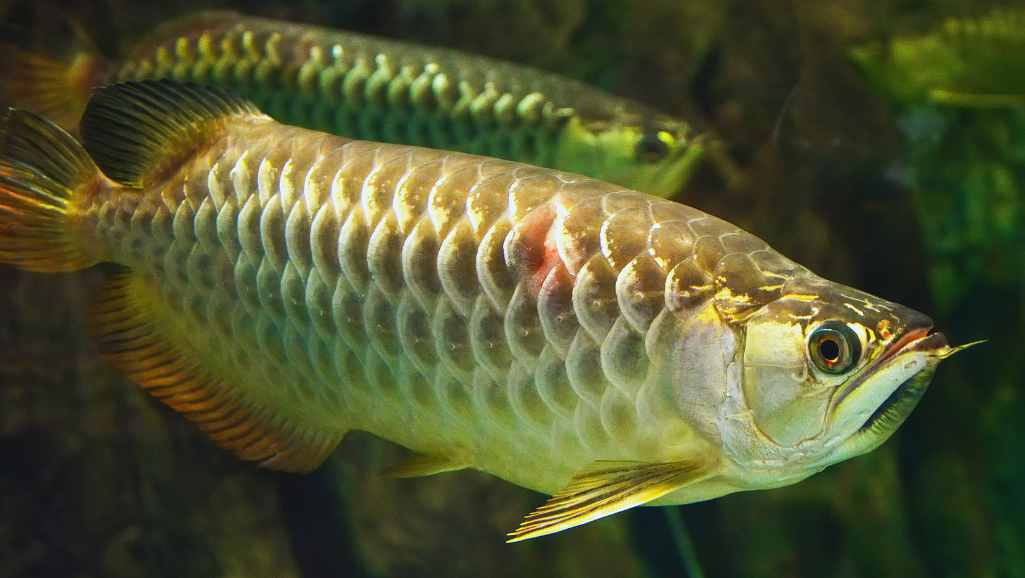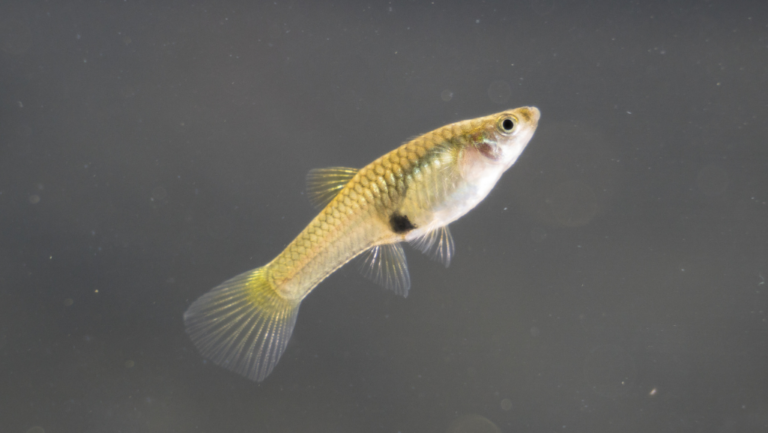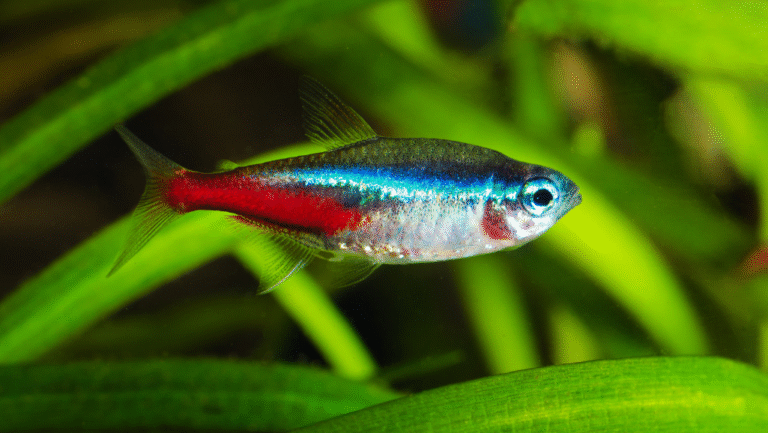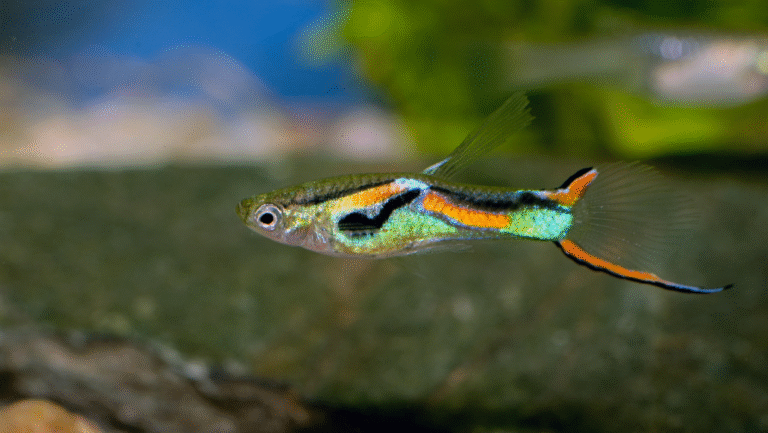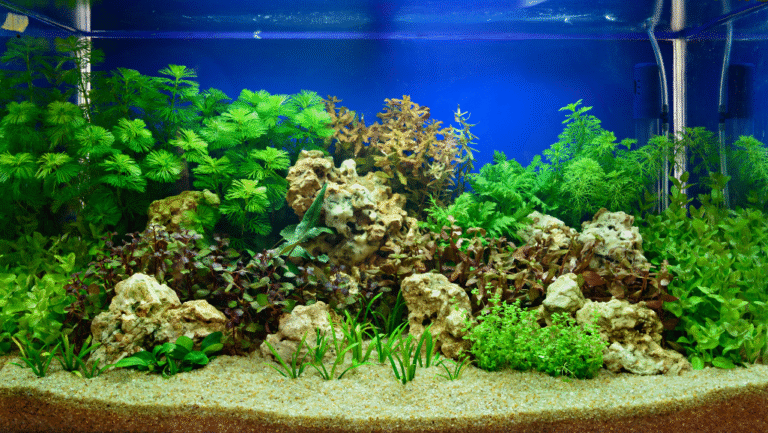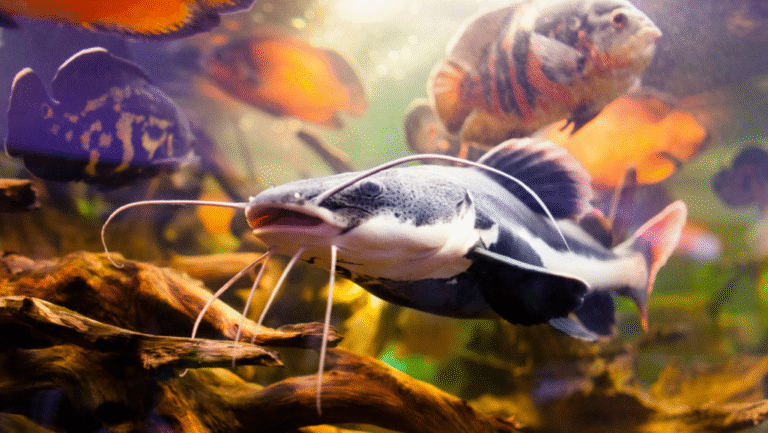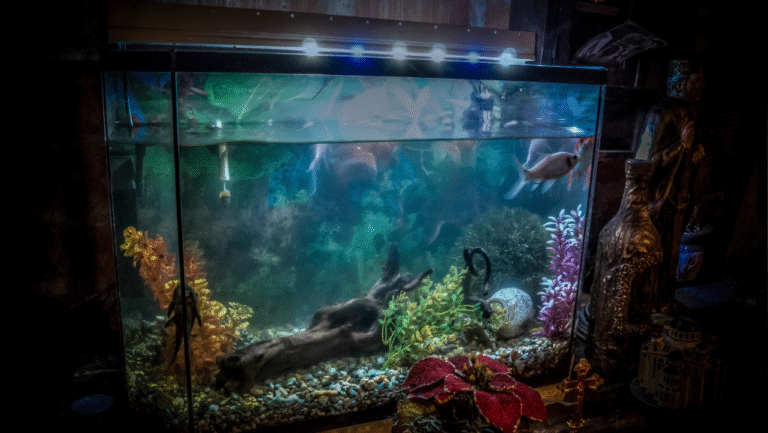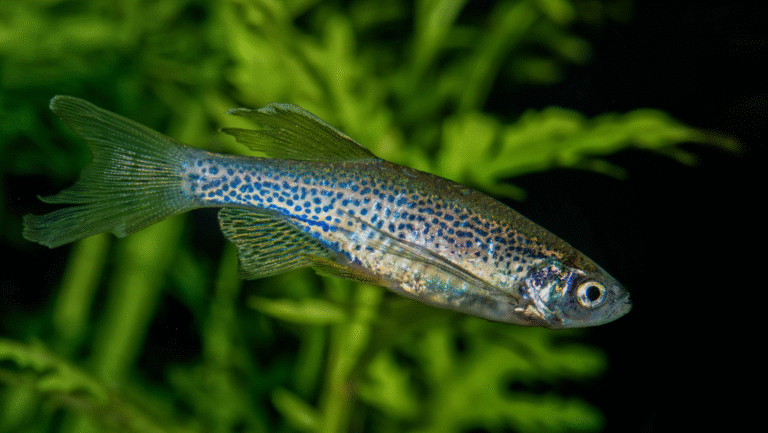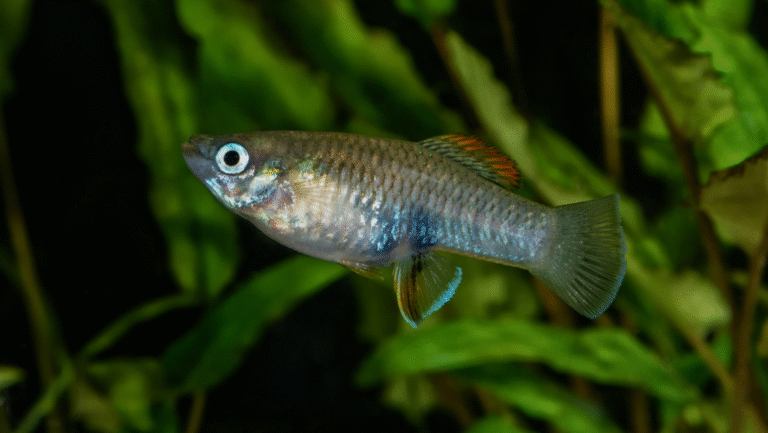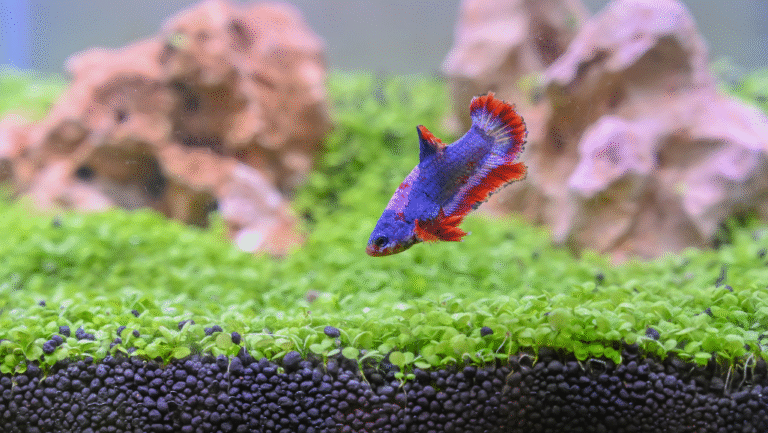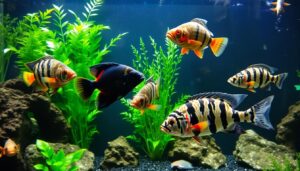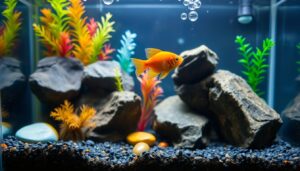The Asian Arowana, also known as the Dragon Fish, is a captivating creature in the world of tropical fish keeping. This freshwater dragon is highly sought after by enthusiasts and collectors. Its sleek body and shimmering scales make it a standout in any aquarium.
Believed to bring good fortune, the Asian Arowana is highly prized for its beauty. Its value can soar, with some specimens selling for up to $300,000. This has sparked a thriving industry, with nearly two million Asian Arowanas traded globally in recent years.
Despite its popularity, the Asian Arowana faces challenges in the wild. It has been listed as endangered since 2006 and is protected in the United States. This creates a paradox where the fish is farmed in large numbers but remains rare in its natural habitat.
Key Takeaways
- Asian Arowana is known as the “Dragon Fish” and highly valued in aquarium keeping
- Prices for individual fish can range from hundreds to hundreds of thousands of dollars
- The species is endangered in the wild but widely bred in captivity
- It holds cultural significance, especially among wealthy Chinese businessmen
- Research has been conducted on its genome, potentially benefiting breeding programs
- The fish is protected by international laws and trade restrictions
- Its story highlights the complex relationship between conservation and commerce
Introduction to the Asian Arowana
The Asian Arowana is a unique aquatic species loved by many. It’s known for its special looks and cultural value. This fish needs special care.
Scientific Classification and Taxonomy
The Asian Arowana belongs to the family Osteoglossidae and genus Scleropages. It comes in many colors. Each color is tied to a certain place, making it popular among collectors.
Geographic Distribution
Asian Arowanas live in Southeast Asia, like Indonesia, Malaysia, Thailand, and Myanmar. They love blackwater rivers and slow-moving waters in forested swamps and wetlands.
Conservation Status
The IUCN Red List says the Asian Arowana is endangered. It’s protected by CITES Appendix I. These fish face big threats:
- Overhunting for money since the 1980s
- Less wild fish
- Loss of their homes
Malaysian Golden and Red Arowanas are almost gone because of too much hunting. The Convention on International Trade in Endangered Species tightly controls their trade. This helps protect the few left in the wild.
| Arowana Variety | Origin | Distinctive Features |
|---|---|---|
| Crossback Golden | Malaysia | Blue base, highly demanded |
| Super Red | Indonesia | Intense red coloration |
| Green | Malaysia, Indonesia, Thailand | Translucent grey or green scales |
Even with conservation efforts, the desire for Asian Arowanas in the aquarium trade is a big problem for their survival in the wild.
Physical Characteristics of the Asian Arowana
The Asian Arowana, also known as a Monster Fish, has amazing physical traits. It can grow up to 90 cm long, making it a standout in any aquarium. Its long, sleek body and large pectoral fins give it a powerful look.
Size and Appearance
Asian Arowanas have a unique look with their large scales and metallic sheen. They have a prominent lower jaw with two barbels, making them look even more special. These fish are known for their ability to jump out of the water to catch prey, showing their agility and strength.
Color Varieties
The Asian Arowana comes in several stunning color varieties:
- Green
- Gold Redtail
- Gold Crossback
- Red (including the prized Super Red Arowana)
Each color variety is native to specific regions. The Super Red Arowana, found in Indonesia’s Kalimantan River, is highly valued for its vibrant red hue.
Unique Features
Asian Arowanas have several unique traits:
| Feature | Description |
|---|---|
| Air Breathing | Can breathe air, allowing survival in low-oxygen waters |
| Movable Mouth Parts | Large, flexible mouth for catching various prey |
| Mouthbrooding | Males care for eggs and hatchlings in their mouths |
These features make the Asian Arowana a true marvel of nature. They combine beauty with remarkable adaptations. Their unique characteristics have made them highly sought after in the aquarium trade, especially the Super Red Arowana variety.
The Cultural Significance of Asian Arowana
The Asian Arowana, also known as the Lucky Fish or Feng Shui Fish, is very important in many Asian cultures. Its looks, with scales that shine like gold, make it a sign of wealth and good luck. In Chinese culture, it’s seen as a real-life version of the Chinese Dragon, a powerful and lucky creature.
Feng Shui experts think the Asian Arowana brings good vibes to homes and businesses. Many people put Arowana fish tanks in certain spots to draw in wealth and success. They believe the fish’s direction is key, with some saying it should face inward to attract wealth.
Here are some key beliefs about the Asian Arowana in Feng Shui:
- It protects against bad luck and evil spirits
- Its golden color attracts wealth
- It brings luck to business owners and entrepreneurs
- Keeping multiple Arowanas (in numbers like 3, 8, or 9) is considered especially lucky
The Asian Arowana’s cultural importance goes beyond its symbolic meaning. In some Asian countries, owning this rare fish shows wealth and status. Its high price and reputation for bringing good fortune make it one of the most sought-after aquarium fish in the world.
While live Arowanas are highly valued, some people use Arowana art or prints to get the fish’s positive energy. This option lets those who can’t keep live fish still enjoy the Arowana’s lucky symbolism in their Feng Shui practices.
Asian Arowana in Aquarium Keeping
Keeping Asian Arowanas in aquariums is a big challenge for Tropical Fish Keeping fans. These amazing creatures need special conditions to do well in tanks.
Habitat Requirements
Asian Arowanas need big tanks because they grow so large. A single fish needs a tank of at least 2 x 1m (6.6 x 3.3 feet). They prefer soft, acidic water at 30°C (86°F). Also, good filtration is key, with a flow rate of at least 600 gallons per hour for a 150-gallon tank.
Feeding and Care
Feeding Arowanas right is important. They eat fish, frogs, insects, and plants. Giving them dry, complete food helps them stay healthy and colorful. These freshwater fish grow fast, up to two inches a month in their first year. They can grow up to 3 feet or more as adults.
Breeding Challenges
Breeding Asian Arowanas is hard for Aquarium Hobbyists. They start to mature sexually at 3-4 years old. Males take care of eggs and larvae by mouthbrooding. Because they are endangered, only captive-bred fish from registered CITES breeders can be sold internationally.
| Aspect | Requirement |
|---|---|
| Minimum Tank Size | 150+ gallons |
| Water Temperature | 72–82°F |
| pH Level | 6.0–7.0 |
| Water Changes | 10-25% every 2-4 weeks |
Learning to care for Asian Arowanas takes time and effort. With the right care, they can live over 20 years. This makes them a big commitment for serious aquarists.
Conclusion
The Asian Arowana, also known as the Dragon Fish, shows how nature, culture, and commerce are connected. This endangered species has seen a lot of challenges because of its popularity in the exotic aquatics trade. From 1978 to 1992, demand went up, with red varieties reaching up to $4,000 in the U.S.
Conservation efforts led to CITES listing the Asian Arowana under Appendix I. This put strict rules on its trade. In the U.S., breaking these rules could mean fines up to $20,000 and jail time. By 1992, over 16 CITES-registered farms were set up to help.
Recent studies have given us new insights into the Asian Arowana’s genetic diversity. The golden variety’s genome is about 779 million bases. Red and green varieties are a bit smaller. These findings could be key for future conservation and understanding their evolution.
For those who keep Dragon Fish in aquariums, keeping them healthy is important. They need a diet rich in protein, with insects like mealworms. As we keep studying and admiring this legendary fish, it’s crucial to balance conservation with responsible keeping.


